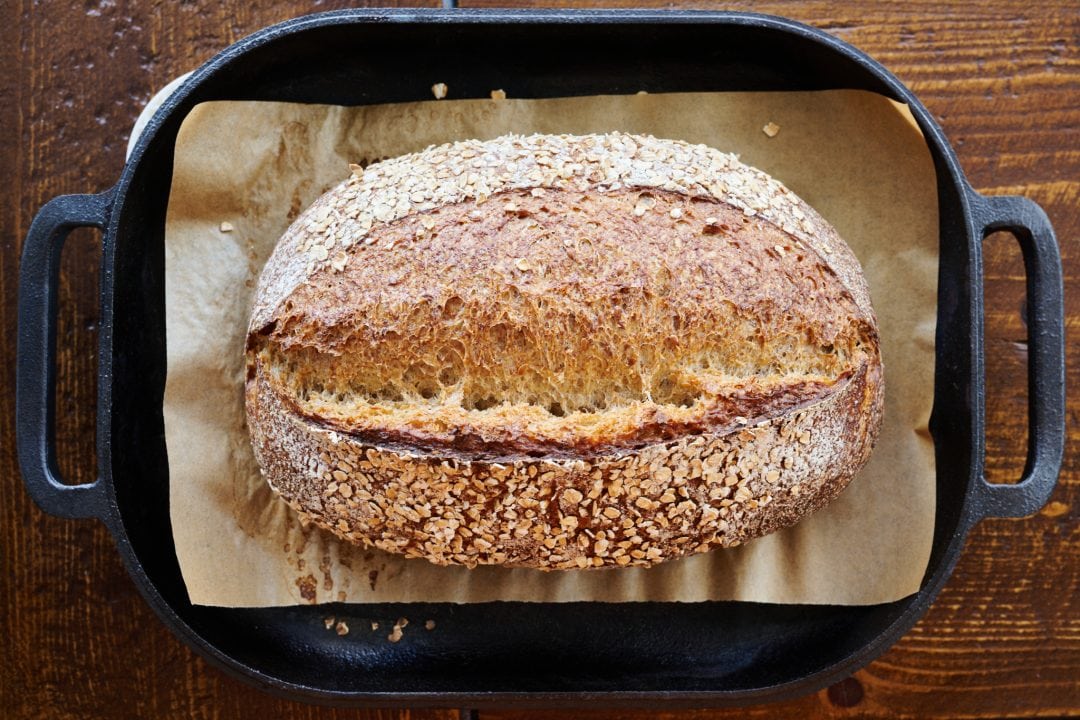There are two reasons to try flour made from the bunchgrass Kernza in your next sourdough bread. Firstly, it gives the loaf a unique flavor profile some bakers call nutty or herbal—and most eaters call delicious. The second reason is because Kernza flour has the potential to dramatically improve the environment.

What is Kernza?
Nearly all the world’s major food crops, including wheat, rice, maize, oats, rye, barley, teff, sorghum, and sugarcane are grasses. Though there are more than 10,000 species of grasses, their potential as food derives from their ability to produce large nutritious seeds. We consumers call those seeds grain, which we eat for their carbohydrates, protein, and essential minerals. Kernza (also called intermediate wheatgrass,Thinopyrum intermedium) is a distant relative of wheat that produces seed heads that are similar to wheat. It is native to grasslands in Europe and Asia.
Why add another to the long list of grains eaten by human populations? Because all the world’s grains are annuals, meaning every year farmers need to till the soil and plant fresh seeds. Kernza, the trademarked name of intermediate wheatgrass, is perennial, meaning (in theory, at least) it can be planted once and harvested repeatedly, year after year.
The Environmental Advantages of Kernza
Everytime a field is cleared of vegetation with its soil turned in preparation for planting, bare soil is exposed to the elements. Wind can blow irreplaceable topsoil from fields (think: the Dust Bowl of the 1930s) or rain erodes soil, robbing it from fields and depositing it in rivers and streams. If perennial grains like Kernza can be developed, keeping the soil covered throughout the year, plowing could be eliminated and precious topsoil could be protected and preserved.
The mission of The Land Institute in Salina, Kansas is the development of perennial grain crops like Kernza. When I visited The Land Institute in the early 1990s, the first thing their director at the time, Wes Jackson, did was walk me to a river running along their farm. The river was the color of milk chocolate, carrying eroded topsoil from midwestern farms to the Mississippi delta. “That’s why,” said Wes, pointing at the river, “we are doing what we are doing.”
A second problem with plowing is caused by the amount of fuel necessary to power a tractor everytime it moves across a field. Very few tractors, especially large models dragging plows through hundreds of acres of soil, get the kind of efficient fuel mileage of, say, a Prius. Tractors generate a lot of carbon dioxide, a climate-warming gas.
Another hazard of plowing—and this is a subtle, but critical (the kind of thing I learned as a PhD student in Soil Science, but not the kind of thing often written about on the front page of the newspaper)—is that plowing exposes tiny particles of soil organic matter to microscopic organisms. Bacteria and fungi gorge on the nutrients previously hidden from them in remote soil crevices. Once consumed, that soil organic matter, rich in carbon, and beneficial in all kinds of ways for plants, is no longer available to enrich the soil.
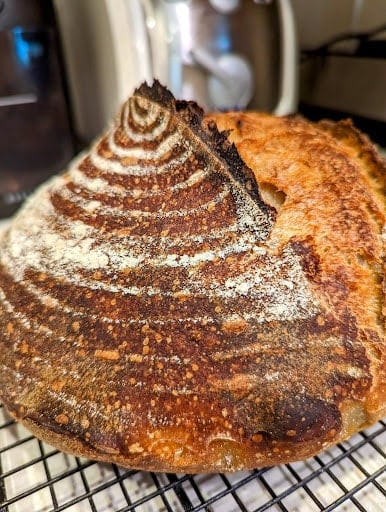
Worse still, the loss of soil organic matter means that carbon once stored in soil is transferred to the atmosphere as carbon dioxide, the waste product of microbial decomposition. Move carbon dioxide from soil to the atmosphere and the planet continues to get hotter.
Unlike annual corn, soy, and wheat, perennial Kernza does not need to be reseeded every year. Instead, it continues growing from the same base, and a whole lot of plowing can be avoided. Moreover, when compared to wheat, Kernza has an amazingly deep and bountiful root system. Kernza actually transfers carbon dioxide from the atmosphere deep below the soil surface, reversing carbon emissions, and effectively delaying climate change. That alone is cause for celebration.
Add it all together and you have a crop that sequesters atmospheric carbon, keeps the soil covered year round, protects topsoil from erosion by wind and rain, and reduces the number of passes needed by farm equipment.
There is one additional benefit for those of us who bake: Kernza flour makes delicious bread.
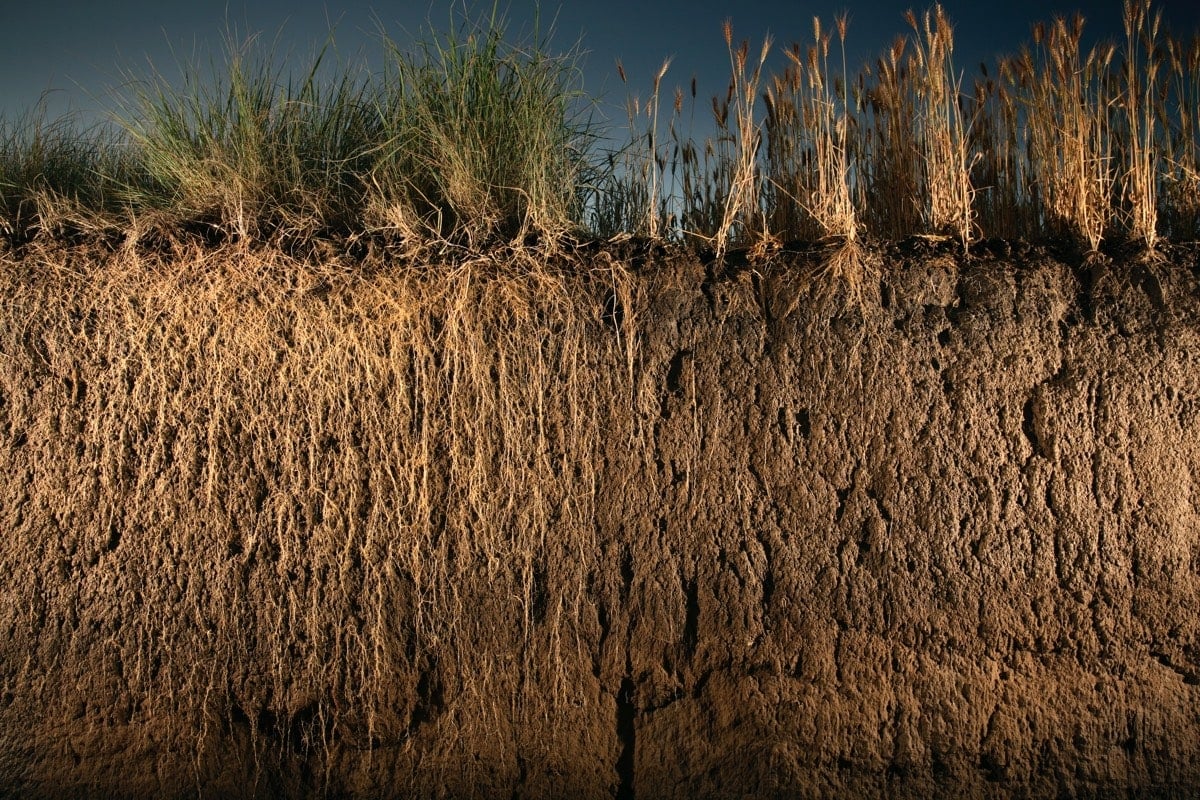
Kernza Breeding Challenges
With the goal of creating, virtually from scratch, a plant capable of producing prodigious quantities of grain without a need to reseed it every year, researchers at The Land Institute started a breeding program in 2003. Among their early objectives was selecting plants with large seeds and bountiful seedheads: the more each plant produces the greater the yield of harvestable food grown on every acre. It is not as easy as it sounds. For comparison, grasses already in the human pantheon (wheat, corn, rice, etc.) have been selected by farmers year after year for their ideal traits since the dawn of human settlements, approximately 10,000 years ago. That’s a big head start.
Plant breeders, ancient or modern, need to save the seeds of plants (and not eat them) with the best combination of attributes. These are many, among them: yield, resistance to pests, deep roots, ability to produce grain year after year, climate resilience, shatter resistance when the seeds are shaken from their stalks, free threshing ability, large seed size, and strong stalks that do not readily blow over on windy days.
When, at the end of a growing season, a field trial exhibits one or two beneficial traits—say, large grains and an improved yield—-it has to be cross-bred with the winners of the climate resilient strain and planted again. There is no guarantee that the crossed varieties will excel at either the original traits or the newly hoped for match. And if it does this year, it might not next year, when the weather is a little dryer or a little warmer. Successful plant breeding, even with the tools of modern science, takes decades. (Faster, one hopes, than the 10,000 years put into the development of existing crops, but many years nonetheless.)
While promising, Kernza is not a perfect crop. So far, yields of Kernza on a per acre basis are only about one-fourth as much as derived from a similar field of wheat. More discouraging, its yields decline rapidly in the second or third year after planting, though the remaining grass makes excellent forage for animals. Consequently, it probably needs to be replanted every three to five years. Not yet what breeders are hoping for, but still better than plowing and planting every year.
The Land Institute has partnered with researchers around the world in France, New Zealand, Sweden, Israel, Turkey, Russia, Germany, Denmark, and throughout the United States.
The early returns are positive. Farmers are interested in experimenting with the new crop; and Kernza’s ability to rapidly sequester carbon and keep additional carbon in the soil in long-term sequestration means it is absolutely worth additional study.
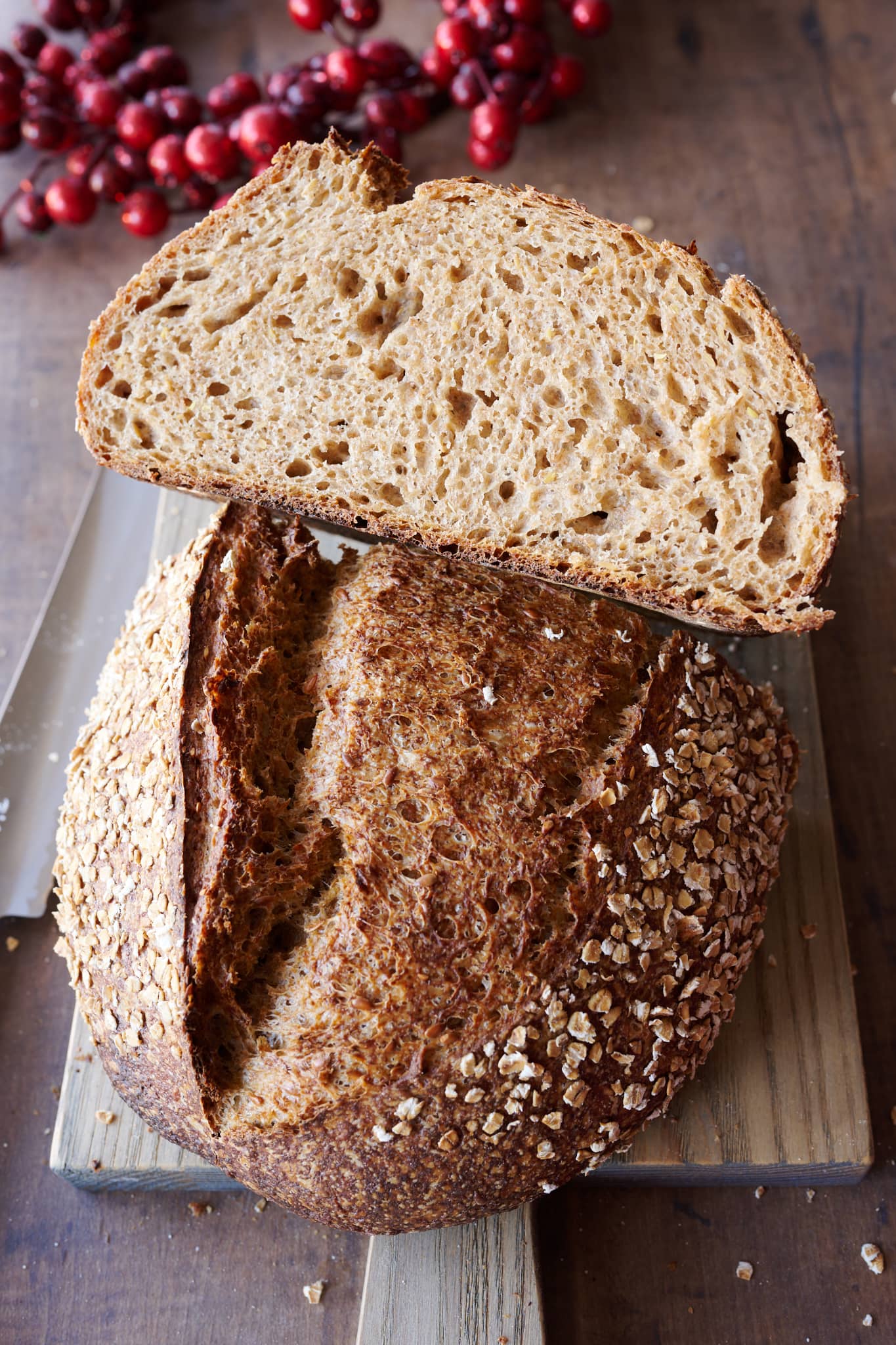
Baking Bread With Kernza
Making Kernza grow profitably is only part one of the puzzle of bringing it to market on a large scale. Farmers are only going to grow thousands of acres of Kernza if they can make a profit. Without the economies of scale accrued by wheat farmers and millers accustomed to managing thousands of acres and tons of grain, the price for Kernza remains painfully high.
For bakers who might use Kernza flour there is a learning curve. As is the case with flours made from ingredients other than wheat, Kernza flour behaves differently than what wheat-based bakers are familiar with. Its protein content is not only higher than most baking flour, but its gluten structure, according to at least one report, is somewhat inelastic and viscous. Like all grains, there are other uses for Kernza beyond bread, including cereal, popped grain, and sprouted grain crackers. It can also be malted for use in whiskey, beer, and cakes and cookies typically made with softer wheats.
Because Kernza’s seeds are smaller than wheat’s, flour made from Kernza tends to be higher in bran content and consequently may require more water to hydrate. Nevertheless, early adopters overwhelmingly respond positively to Kernza’s flavor profile: “nutty” being the most frequently cited term I see; though “cinnamon,” “herbal,” and “sweet” also show up as descriptors. According to the Land Institute, bakers also appear to appreciate being on the forefront of a baking challenge that is contributing to the fight against climate change.
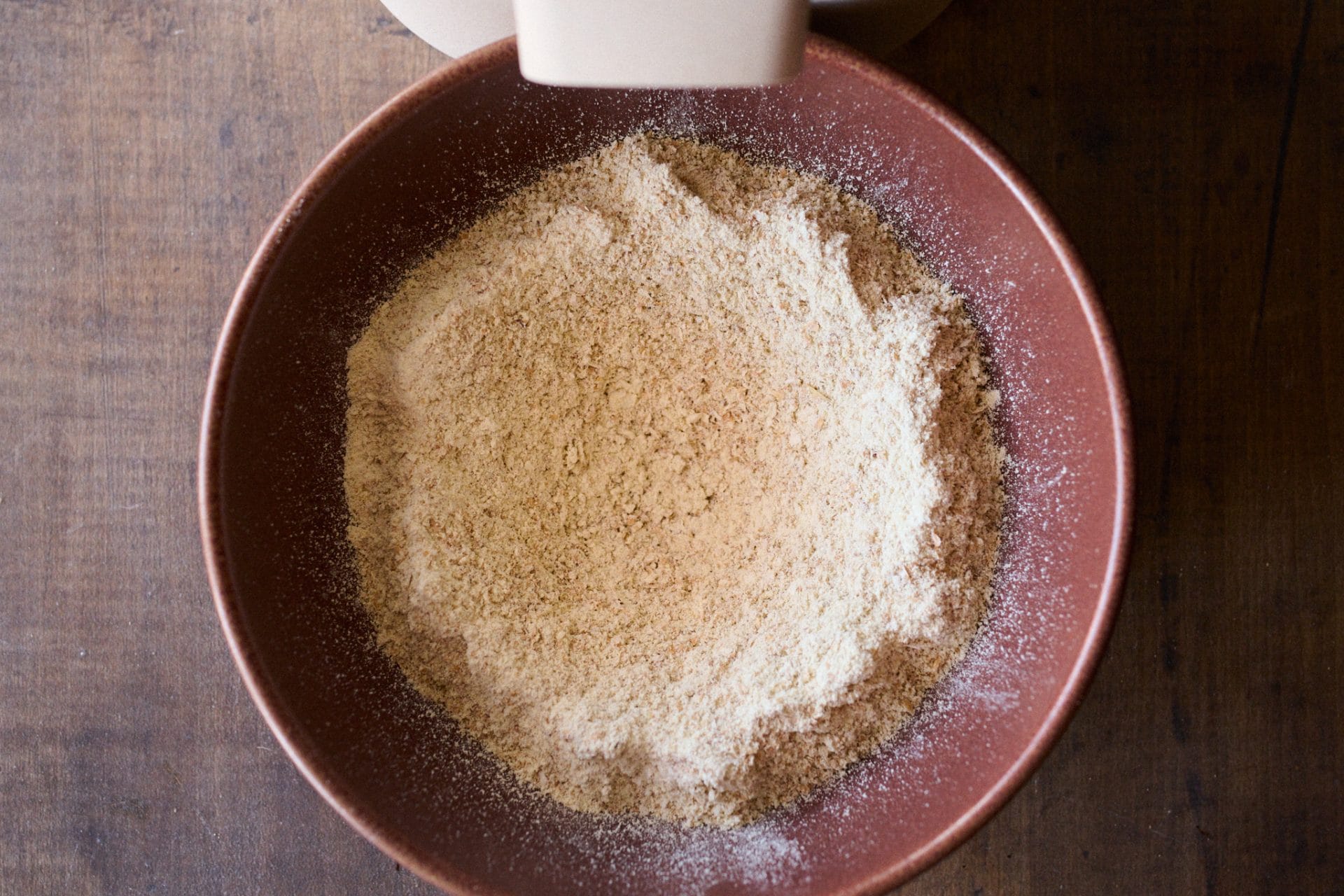
Nutritionally, Kernza is higher in protein, fiber, carotenoids, and other antioxidants, when compared to wheat flour. Its protein content is double that found in white wheat berries. Compared to white whole wheat, it contains almost five times as much calcium, and nearly double the quantity of dietary fiber (nearly seven times the fiber as is found in all-purpose white flour). For a full report on the nutrient content of Kernza flour, check out this report by the Agricultural Utilization Research Institute.
Where to Find Kernza Flour
In order for Kernza to be fully incorporated into the commercial food system several links in the commodity chain need to be strengthened. Farmers have to produce the grain with consistency; millers who are capable of working with small lots have to be located near the farms raising Kernza, (hundreds or thousands of pounds, rather than millions of pounds that ordinarily pass through large rollers in industrial mills); and professional bakers need to get comfortable working with a product likely to be much less consistent in its performance than blended flours they’re accustomed to.
All that said, home bakers should consider experimenting with Kernza. If you want to try Kernza, some current vendors include Prairy Foundation (look in the Provisions tab), Breadtopia, which sells whole grain, and The Land Institute has licensed these distributors.
Kernza FAQs
Is Kernza gluten-free?
Kernza is similar to annual wheat and, therefore, is not gluten-free.
What does Kernza taste like?
Kernza has a slightly sweet, grassy, and nutty flavor profile.
Is Kernza whole grain?
If milling Kernza at home, it can be used as a whole grain flour added to bread, pancakes, waffles, and more. When purchasing Kernza flour, be sure it is not sifted if you want it whole grain.
What’s Next?
Check out The Perfect Loaf’s Kernza sourdough bread recipe, which uses 30% freshly milled Kernza for a wholesome and delicious loaf of bread.


